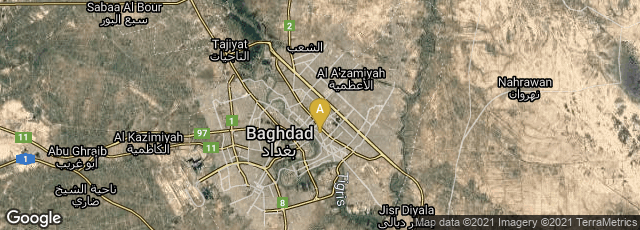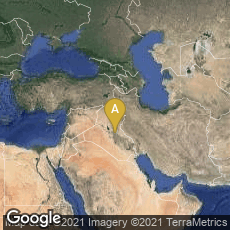Conquest of Baghdad by the Mongols 1258. Double-page illustration of Rashid-ad-Din's Gami' at-tawarih. Tabriz (?), 1st quarter of 14th century. Water colors and gold on paper. Original size: 37.4 cm x 29.3 cm (right), 37.2 cm x 29 cm (left). Staatsbibliothek Berlin, Orientabteilung, Diez A fol. 70, p. 4 (right) and 7 (left). Note the pontoon bridges, siege engines, and the refugee on the boat- maybe a high dignitary or even the Caliph himself- in the left part of the right illustration.


A: Baghdad, Al Saadoon Park, Baghdad Governorate, Iraq
Hulagu Khan's siege of Baghdad (1258). Bibliothèque nationale de France, Département des Manuscrits, Division orientale, Supplément persan 1113, fol. 180v-181
In 1258 Mongols under the command of Hulagu Khan sacked Baghdad, destroying the House of Wisdom, the leading library in the leading intellectual center of the Arab world.
The House of Wisdom, founded in the eighth century, contained countless precious documents accumulated over five hundred years. Survivors said so many books were thrown into the river that the waters of the Tigris ran black with ink; others said the waters were red from blood.
"In one week, libraries and their treasures that had been accumulated over hundreds of years were burned or otherwise destroyed. So many books were thrown into the Tigris River, according to one writer, that they formed a bridge that would support a man on horseback" (Harris, History of Libraries in the Western World 4th ed [1999] 85).